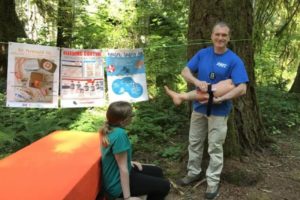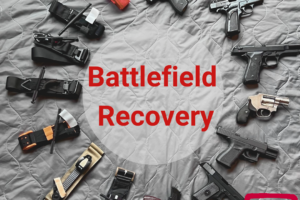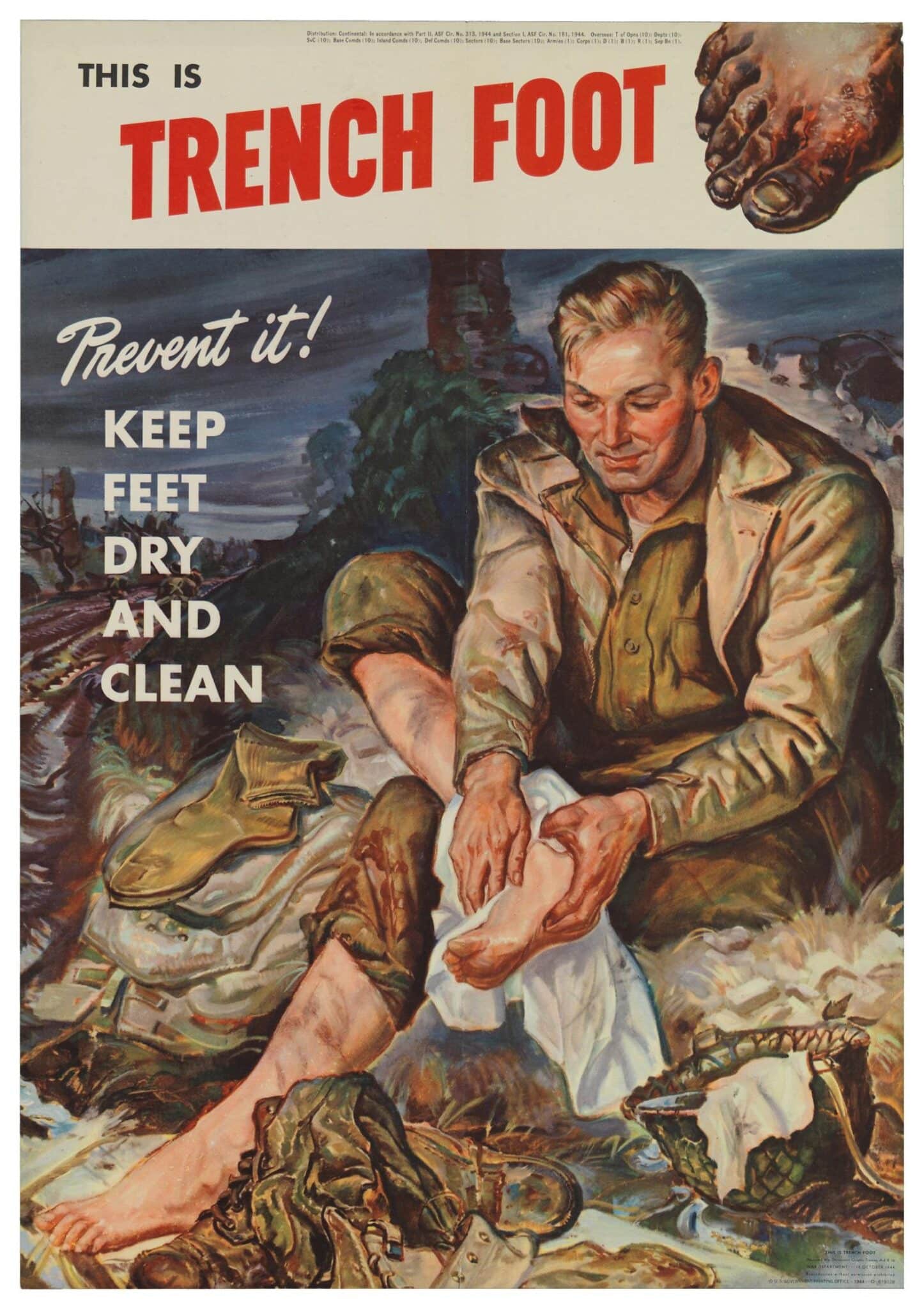
Infectious diseases associated with life in the trenches
- Posted by Mike Shertz MD/18D
- Categories More
🕖 Reading Time, 5 minutes
As we approach the second year of the war in Ukraine, it can be helpful to refamiliarize ourselves with some infectious disease processes prevalent in trench warfare. All of these infections occur because of the difficulty fighting forces face keeping clean, warm, and dry in tight, wet, and muddy trench conditions.
World War I was the first major conflict where more deaths occurred secondary to wounds than infectious disease: the ratio was five war wounds to one infectious disease death. In contrast, in the Crimean War (1854 to 1856) while 60,000 died from wounds or were killed in action, more than twice that number, 130,000 died of disease. Similar ratios existed in the South African War (1899 to 1902).
Although antibiotics largely didn’t exist during World War I, knowledge of microbiology was reasonably advanced. In general, better water purification and vaccinations decreased deaths from infectious diseases among military personnel. However, the living conditions in the trenches created some “new” diseases.
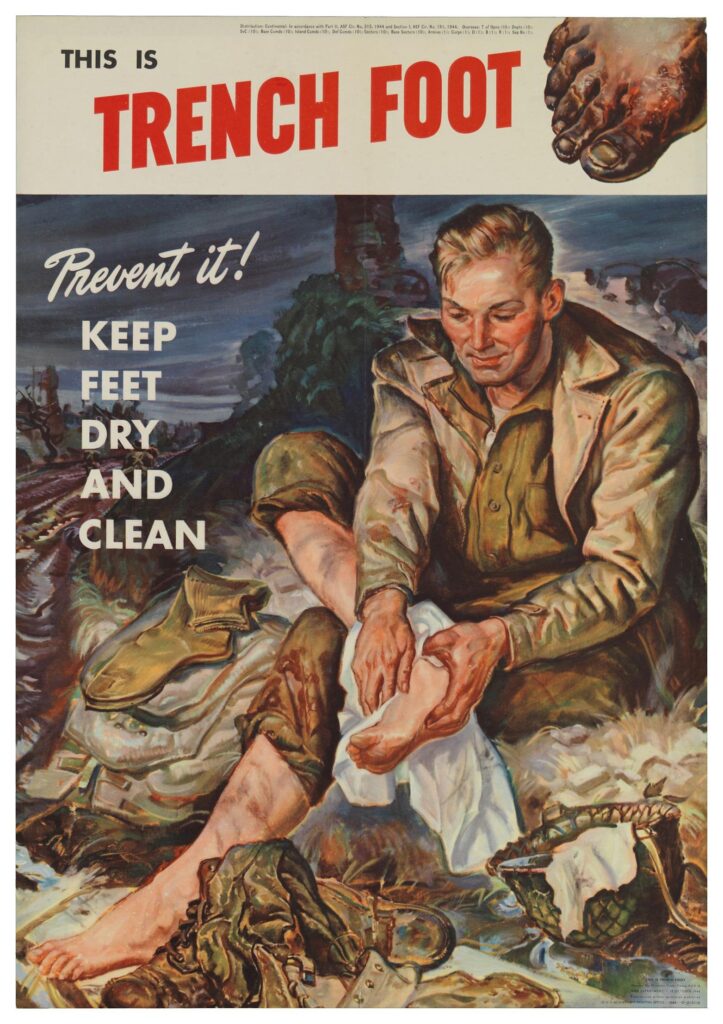
TRENCH FOOT
Trench foot, or more accurately immersion foot, is a byproduct of continued damp exposure of the feet in non-freezing, but cold conditions, resulting in initially non-infectious skin damage that frequently becomes infected and in severe cases, progresses to gangrene with resultant need for amputation.
It was a significant enough problem during WW1 that the US military created posters during WW2 to educate soldiers about how to prevent it. Ironically today, it occurs at outdoor music festivals. At the 1998 Glastonbury music festival, doctors were seeing approximately ninety people a day with Immersion Foot.
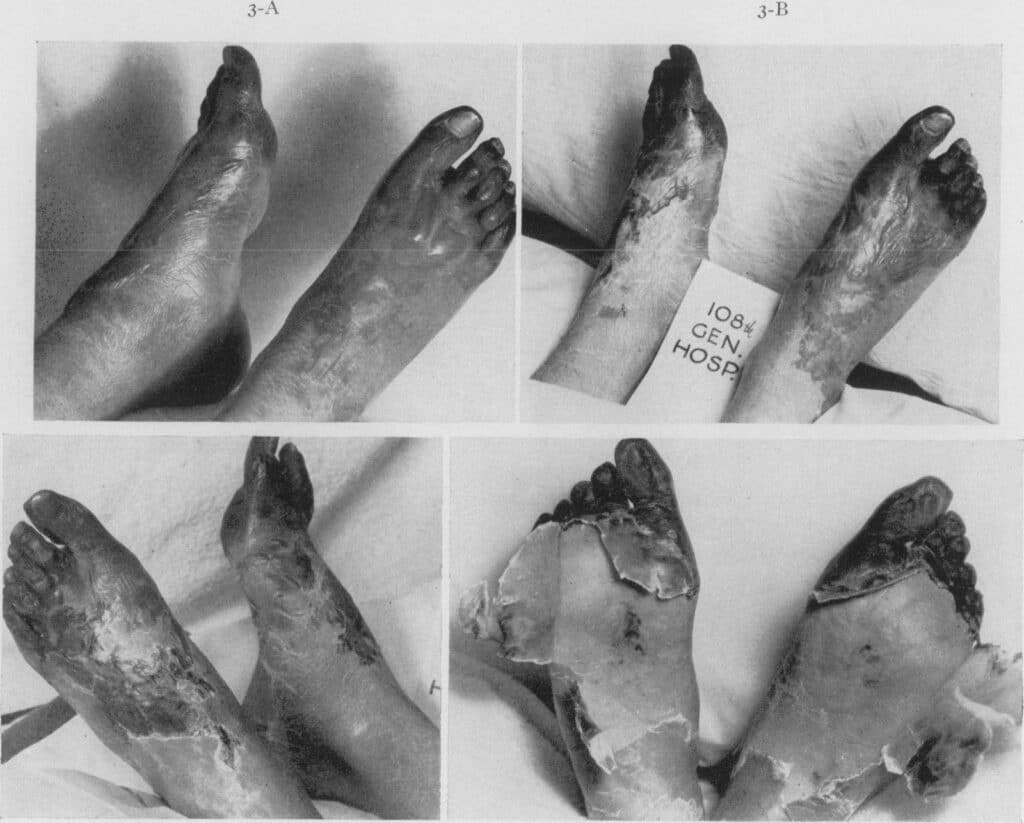

TRENCH FEVER
Trench fever, first described in 1915, was caused by what is now known as the bacteria Bartonella quintana and was responsible for 20% of admissions to a casualty clearing station in 1917. Nearly all combatants had body lice and the lice’s feces spread the infecting organism. Headache, fever, leg pain, and rashes which waxed and waned for weeks were typical presentations. Some cases progressed to endocarditis, an infection of the heart valves. The infecting organism is still found today in body lice of the homeless population worldwide.
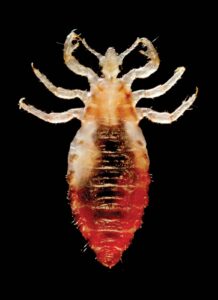
BACTERIAL GAS GANGRENE
Bacterial Gas Gangrene is typically caused by clostridial bacteria that generate gas bubbles in dead tissue, hence the name. Present in soil, these organisms were frequent contaminants of war wounds caused by the extensive soil disruption from shelling and trenching.
In 1914 12% of British war wounded had this infection. By 1918, it decreased to less than 1%, all secondary to more rapid wound debridement of devitalized (dead) tissue, expedient evacuation from the battlefield, and a better understanding of the disease.

TRENCH MOUTH
Trench mouth, or acute necrotizing ulcerative gingivitis, is a painful and rapidly progressing oral infection of the gums caused by opportunistic oral bacteria, largely anaerobic and spirochetal species. It occurs because of an impaired immune system from physical stress, poor nutrition, tobacco use, and/or poor hygiene. It appears as “punched out,” inflamed gingival (gum) lesions. Without treatment, it can progress to substantial oral/facial tissue loss and death. Documented by historians since 400 BC, it frequently occurs among fighting forces.

References
Pennington H. The impact of infectious disease in wartime: a look back at WW1. Future Microbiol. 2019 Feb;14:165-168.
Chorba T. Trench conflict with combatants and infectious disease. Emerg Inf Dis. 2018 24-11.
Dr. Mike Shertz is the Owner and Lead Instructor at Crisis Medicine. Dr. Shertz spent over 30 years gaining the experience and insight to create and provide his comprehensive, science-informed, training to better prepare everyday citizens, law enforcement, EMS, and the military to manage casualties and wounded in high-risk environments. Using a combination of current and historical events, Dr. Shertz’s lectures include relevant, illustrative photos, as well as hands-on demonstrations to demystify the how, why, when to use each emergency medical procedure you need to become a Force Multiplier for Good.


